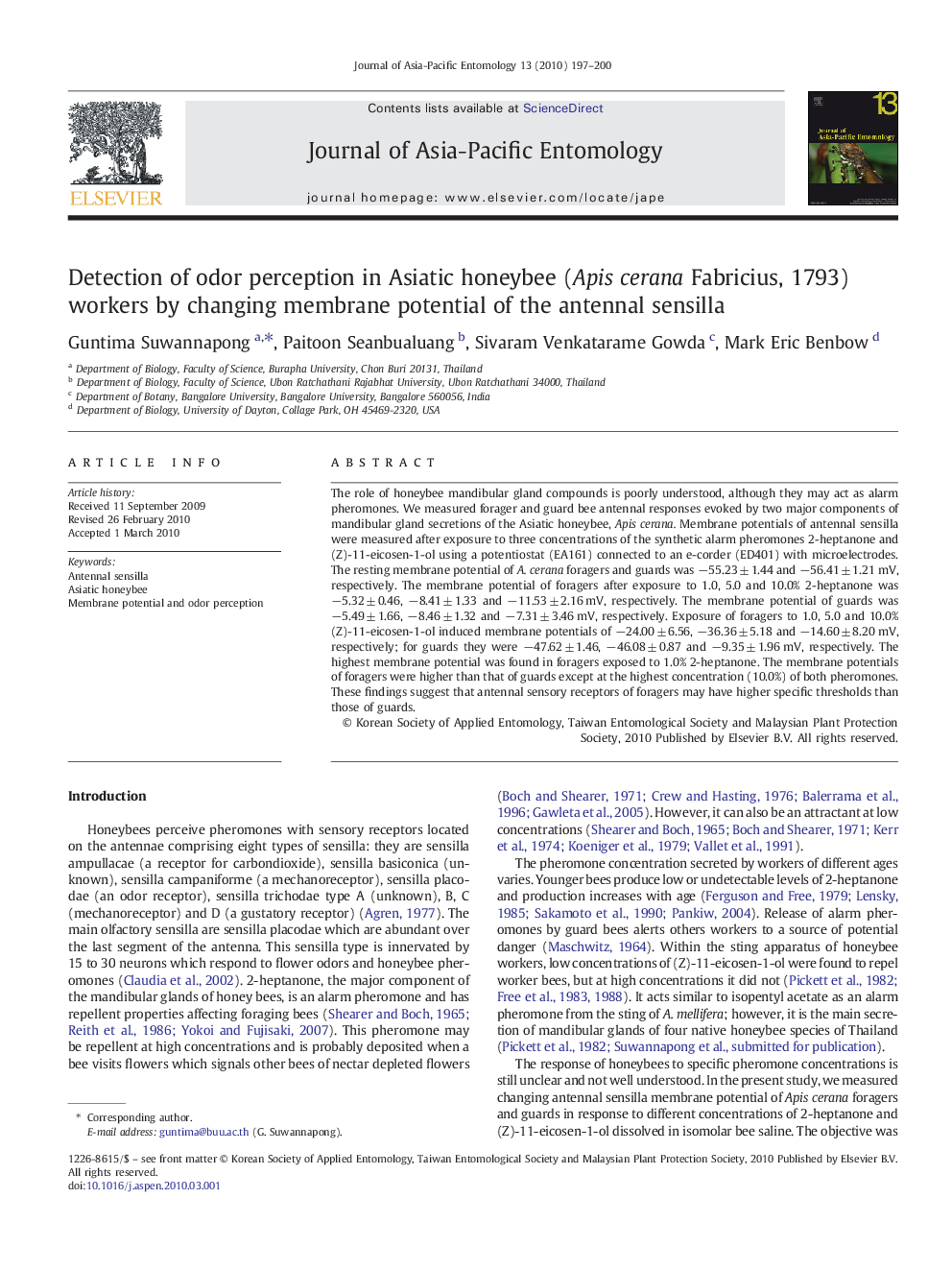| کد مقاله | کد نشریه | سال انتشار | مقاله انگلیسی | نسخه تمام متن |
|---|---|---|---|---|
| 4524931 | 1323599 | 2010 | 4 صفحه PDF | دانلود رایگان |

The role of honeybee mandibular gland compounds is poorly understood, although they may act as alarm pheromones. We measured forager and guard bee antennal responses evoked by two major components of mandibular gland secretions of the Asiatic honeybee, Apis cerana. Membrane potentials of antennal sensilla were measured after exposure to three concentrations of the synthetic alarm pheromones 2-heptanone and (Z)-11-eicosen-1-ol using a potentiostat (EA161) connected to an e-corder (ED401) with microelectrodes. The resting membrane potential of A. cerana foragers and guards was −55.23 ± 1.44 and −56.41 ± 1.21 mV, respectively. The membrane potential of foragers after exposure to 1.0, 5.0 and 10.0% 2-heptanone was −5.32 ± 0.46, −8.41 ± 1.33 and −11.53 ± 2.16 mV, respectively. The membrane potential of guards was −5.49 ± 1.66, −8.46 ± 1.32 and −7.31 ± 3.46 mV, respectively. Exposure of foragers to 1.0, 5.0 and 10.0% (Z)-11-eicosen-1-ol induced membrane potentials of −24.00 ± 6.56, −36.36 ± 5.18 and −14.60 ± 8.20 mV, respectively; for guards they were −47.62 ± 1.46, −46.08 ± 0.87 and −9.35 ± 1.96 mV, respectively. The highest membrane potential was found in foragers exposed to 1.0% 2-heptanone. The membrane potentials of foragers were higher than that of guards except at the highest concentration (10.0%) of both pheromones. These findings suggest that antennal sensory receptors of foragers may have higher specific thresholds than those of guards.
Journal: Journal of Asia-Pacific Entomology - Volume 13, Issue 3, September 2010, Pages 197–200